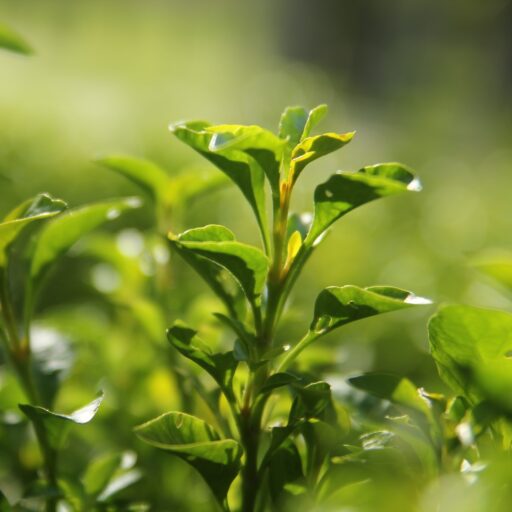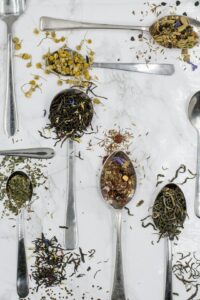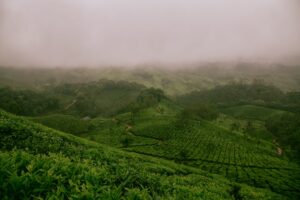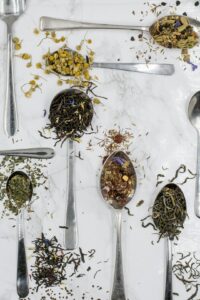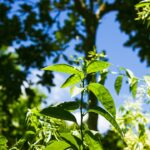Support our educational content for free when you purchase through links on our site. Learn more
Can Tea Plants Be Grown in Pots? [2024] 🍵
Quick Answer: Yes, tea plants can be successfully grown in pots, both indoors and outdoors. With the right care and conditions, you can cultivate your own tea right at home!
Have you ever dreamed of sipping a cup of tea made from leaves you grew yourself? Well, you’re in luck! Tea plants, scientifically known as Camellia sinensis, can indeed be grown in pots, allowing you to enjoy the satisfaction of cultivating your own tea. Whether you have limited outdoor space or simply want to bring the beauty of tea plants indoors, potting tea plants is a fantastic option. In this article, we’ll delve into the world of growing tea plants in pots, providing you with all the information you need to successfully nurture your own tea garden. So, let’s get started and explore the wonderful world of tea cultivation! ☕
Table of Contents
- Quick Answer
- Quick Tips and Facts
- Background: The Art of Growing Tea
- Choosing the Right Tea Plant Variety
- Selecting the Perfect Pot and Soil
- Providing Optimal Sunlight and Temperature
- Watering and Fertilizing Tea Plants
- Pruning and Harvesting Tea Leaves
- Can Tea Plants Be Grown Indoors?
- FAQ
- Conclusion
- Recommended Links
- Reference Links
Quick Tips and Facts
✅ Tea plants, also known as Camellia sinensis, can be grown in pots both indoors and outdoors.
✅ Tea plants prefer semi-shaded areas with dappled sunlight, making them suitable for a variety of growing conditions.
✅ When growing tea plants in containers, choose a pot with good drainage that is approximately two times the size of the current root ball.
✅ Use potting soil specifically formulated for acid-loving plants to create the ideal growing environment for tea plants.
✅ Tea plants require regular watering, especially during the first two years of growth. Potted plants may need more frequent watering due to faster soil drying.
✅ Prune tea plants after the blooming period each year to maintain their size and shape.
✅ Harvest the first flush of tea leaves in the spring and continue regular harvesting to encourage new growth and bushier plants.
Now that we have covered the basics, let’s dive deeper into the art of growing tea plants in pots!
Background: The Art of Growing Tea
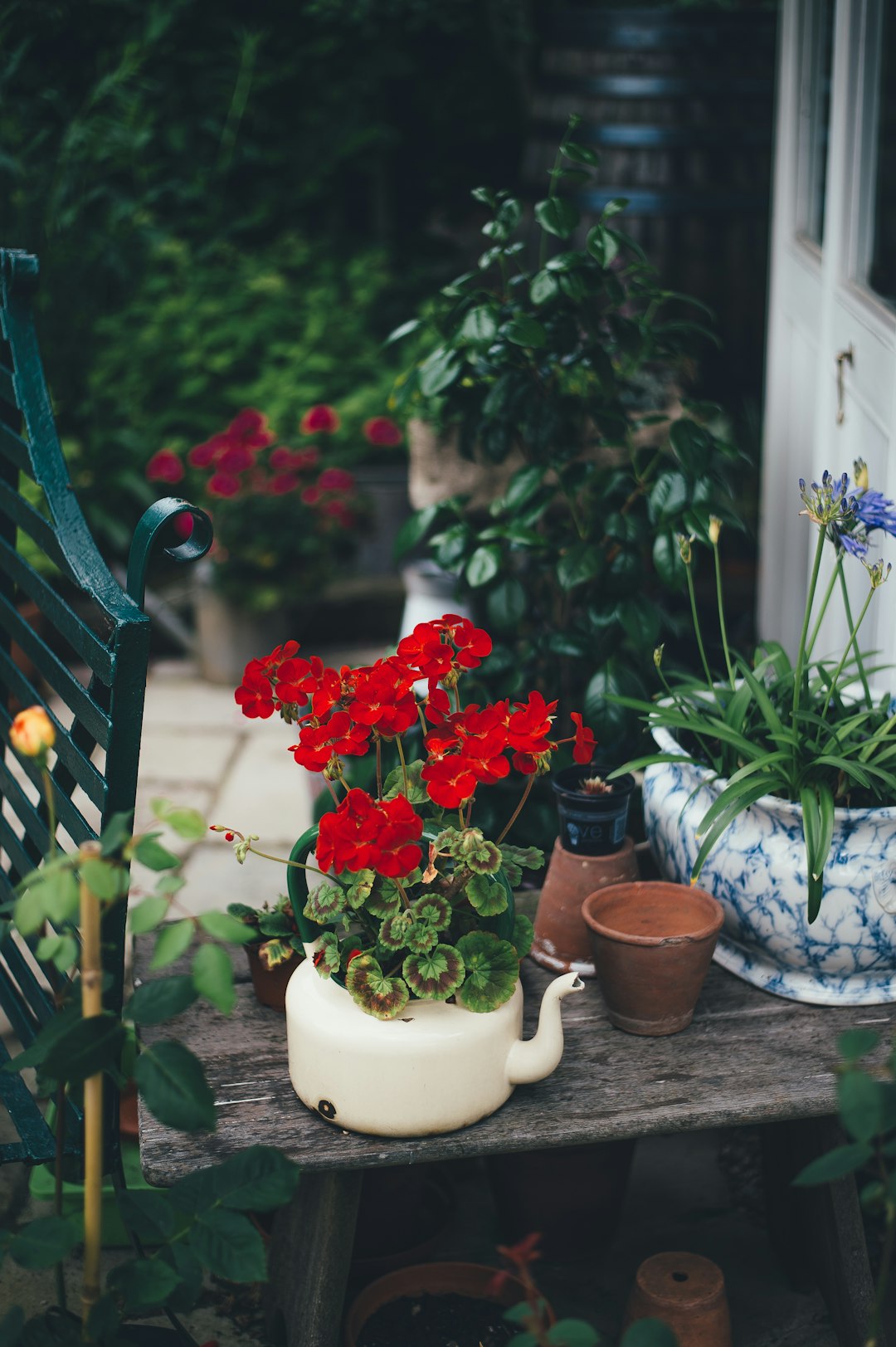
Before we delve into the specifics of growing tea plants in pots, let’s take a moment to appreciate the rich history and cultural significance of tea cultivation. Tea, one of the most widely consumed beverages in the world, has been enjoyed for centuries and is deeply rooted in various cultures.
Tea plants belong to the Camellia family and are native to East Asia, including countries like China, Japan, and India. These evergreen shrubs can reach heights of up to 50 feet if left unpruned, but they can also be successfully grown in containers, making them accessible to tea enthusiasts with limited space.
The process of growing tea involves nurturing the plants, harvesting the leaves, and processing them to create different types of tea, such as green tea, black tea, oolong tea, and white tea. Each type of tea undergoes a unique production process, resulting in distinct flavors and aromas.
Now that we have a better understanding of the art of growing tea, let’s explore the specific steps involved in successfully cultivating tea plants in pots.
Choosing the Right Tea Plant Variety
When it comes to growing tea plants in pots, selecting the right variety is crucial. The most common tea plant variety is Camellia sinensis, which is known for its excellent tea production. Within the Camellia sinensis species, there are several cultivars to choose from, each with its own unique characteristics.
Here are a few popular tea plant varieties to consider:
-
Camellia sinensis var. sinensis: This variety is native to China and is well-suited for growing in cooler climates. It produces delicate and aromatic teas, making it a favorite among tea connoisseurs.
-
Camellia sinensis var. assamica: Originating from the Assam region in India, this variety is more tolerant of warmer climates. It produces robust and full-bodied teas, often used in breakfast blends.
-
Camellia sinensis var. cambodiensis: This variety is native to Cambodia and is known for its high caffeine content. It produces teas with a strong and bold flavor profile.
When selecting a tea plant variety, consider your climate, available space, and personal taste preferences. Choose a variety that is well-suited to your growing conditions to ensure the best results.
Selecting the Perfect Pot and Soil
Now that you’ve chosen the perfect tea plant variety, it’s time to select the right pot and soil for your tea plants. Choosing the correct pot and soil is essential for providing the optimal growing environment.
Pot Selection
When it comes to selecting a pot for your tea plants, there are a few key factors to consider:
-
Size: Choose a pot that is approximately two times the size of the current root ball. This will provide enough space for the roots to grow and prevent them from becoming root-bound.
-
Drainage: Ensure that the pot has adequate drainage holes to prevent waterlogging, which can lead to root rot. Tea plants prefer well-draining soil, so proper drainage is crucial.
-
Material: Opt for pots made from materials that provide insulation, such as terracotta or ceramic. These materials help regulate soil temperature and prevent the roots from overheating or freezing.
Soil Selection
Tea plants thrive in well-draining soil that is slightly acidic. Here are a few tips for selecting the right soil for your tea plants:
-
Acidity: Tea plants prefer slightly acidic soil with a pH level between 6 and 6.5. Use potting soil specifically formulated for acid-loving plants or amend regular potting soil with organic matter like peat moss or compost to achieve the desired acidity.
-
Drainage: Ensure that the soil you choose provides good drainage. Avoid heavy clay soils that retain water, as they can lead to root rot. Sandy or loamy soils are ideal for tea plants.
-
Nutrients: Tea plants benefit from nutrient-rich soil. Consider adding slow-release organic fertilizers or compost to provide a steady supply of nutrients throughout the growing season.
By selecting the right pot and soil, you’ll create an ideal growing environment for your tea plants, setting them up for success.
Providing Optimal Sunlight and Temperature
Tea plants thrive in specific sunlight and temperature conditions. While they require a lot of sun, they also prefer semi-shaded areas with dappled sunlight. Here are a few tips for providing optimal sunlight and temperature for your tea plants:
-
Sunlight: Place your tea plants in an area that receives at least 4-6 hours of sunlight per day. Morning sunlight is preferable, as it is less intense and helps prevent leaf scorching.
-
Shade: Tea plants appreciate some shade during the hottest part of the day, especially in regions with intense sunlight. Consider providing shade cloth or placing your tea plants near taller plants or structures that can provide some shade.
-
Temperature: Tea plants thrive in moderate temperatures between 65°F and 85°F (18°C to 29°C). Protect your tea plants from extreme temperatures, as they can be sensitive to both frost and excessive heat.
By providing the right balance of sunlight and shade, as well as maintaining optimal temperature conditions, you’ll ensure healthy growth and vibrant tea leaves.
Watering and Fertilizing Tea Plants
Proper watering and fertilizing are essential for the health and vitality of your tea plants. Tea plants have specific water requirements, and providing the right nutrients will help them thrive. Here are some guidelines for watering and fertilizing your tea plants:
Watering
-
Frequency: Tea plants require regular watering, especially during the first two years of growth. Water your tea plants 2-3 times a week during the summer months, ensuring that the soil remains consistently moist.
-
Potted Plants: Keep in mind that potted tea plants may require more frequent watering, as the soil tends to dry out quicker. Monitor the moisture level of the soil and adjust your watering schedule accordingly.
-
Drainage: Avoid overwatering your tea plants, as they are susceptible to root rot. Ensure that the pot has proper drainage and that excess water can freely flow out.
Fertilizing
-
Organic Matter: Tea plants benefit from the addition of organic matter, such as compost or well-rotted manure. Apply a layer of organic matter around the base of the plant, avoiding direct contact with the stem.
-
Ericaceous Fertilizer: Consider using an ericaceous fertilizer specifically formulated for acid-loving plants. Follow the manufacturer’s instructions for application rates and frequency.
-
Timing: Fertilize your tea plants during the active growing season, typically from spring to early fall. Avoid fertilizing during the dormant period, as tea plants require a period of rest.
By providing adequate water and nutrients, you’ll ensure that your tea plants grow strong and healthy, producing abundant leaves for brewing your own tea.
Pruning and Harvesting Tea Leaves
Pruning and harvesting are essential steps in maintaining the health and productivity of your tea plants. Pruning helps control the size and shape of the plants, while harvesting provides you with fresh tea leaves for brewing. Here’s what you need to know:
Pruning
-
Timing: Prune your tea plants after the blooming period each year. This is typically in late spring or early summer, depending on your region. Avoid pruning during the dormant period, as it may hinder new growth.
-
Size and Shape: Prune your tea plants to maintain the desired size and shape. Remove any dead, damaged, or overcrowded branches. Aim for an open and airy structure to promote airflow and prevent disease.
-
Pinching: Pinch off the top growth of your tea plants to encourage bushier growth. This will result in more leaves for harvesting and a fuller, more compact plant.
Harvesting
-
First Flush: The first flush of tea leaves is ready for harvesting in the spring. Look for young, tender leaves and pluck them carefully, leaving the bud intact. This encourages new growth and ensures a continuous supply of fresh leaves.
-
Regular Harvesting: Regularly harvest your tea leaves throughout the growing season. This helps maintain the plant’s shape and encourages new growth. Use sharp scissors or pruning shears to carefully remove the leaves.
-
Leaf Processing: Once harvested, you can process the tea leaves to create your desired type of tea. This involves withering, rolling, oxidizing (for black tea), and drying the leaves. Each type of tea requires a specific processing method, so be sure to research and follow the appropriate techniques.
By pruning your tea plants and harvesting the leaves at the right time, you’ll ensure healthy growth and a bountiful supply of tea leaves for brewing.
Can Tea Plants Be Grown Indoors?
If you’re limited on outdoor space or simply want to bring the beauty of tea plants indoors, you’ll be pleased to know that tea plants can indeed be grown indoors. While they require a bit more attention and care, growing tea plants indoors can be a rewarding experience.
Here are a few tips for successfully growing tea plants indoors:
-
Sunlight: Place your tea plants near a bright, south-facing window that receives ample sunlight. If natural light is limited, consider using grow lights to supplement the light requirements.
-
Temperature: Tea plants prefer moderate temperatures between 65°F and 85°F (18°C to 29°C). Avoid placing them near drafts or areas with extreme temperature fluctuations.
-
Humidity: Tea plants appreciate higher humidity levels. Consider using a humidifier or placing a tray filled with water near the plants to increase humidity.
-
Air Circulation: Ensure proper air circulation around your indoor tea plants. This helps prevent the buildup of moisture and reduces the risk of fungal diseases.
-
Watering: Indoor tea plants may require more frequent watering due to the drier indoor environment. Monitor the moisture level of the soil and adjust your watering schedule accordingly.
By providing the right conditions and care, you can successfully grow tea plants indoors and enjoy the beauty and aroma of fresh tea leaves right in your own home.
FAQ
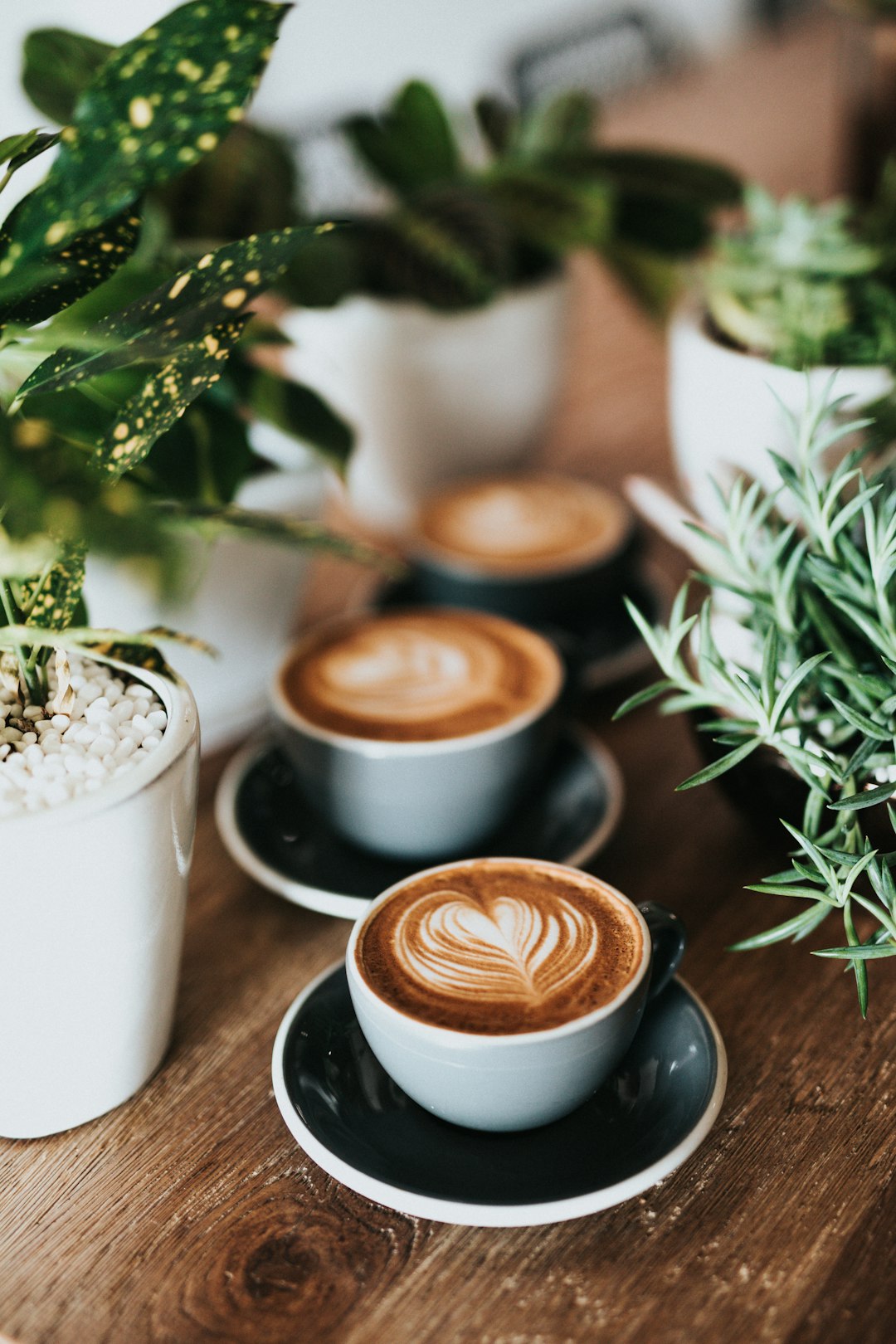
Do tea plants like full sun or shade?
Tea plants prefer semi-shaded areas with dappled sunlight. While they require a lot of sun, they also appreciate some shade during the hottest part of the day, especially in regions with intense sunlight.
Read more about “Grow Tea Tree Indoors: Cultivate Your Own Indoor Tea Garden … 🌱”
Where do tea plants grow best?
Tea plants thrive in regions with moderate temperatures and well-draining soil. They are native to East Asia, including countries like China, Japan, and India. However, with the right care and conditions, tea plants can be grown successfully in various climates.
Read more about “Can You Grow Tea Tree in USA? … 🌿🇺🇸”
What is the lifespan of a tea plant?
Tea plants have a lifespan of several decades if properly cared for. With regular pruning and maintenance, tea plants can continue to produce fresh leaves for many years.
Read more about “Do Tea Plants Come Back Every Year? …”
Can tea plants be grown indoors?
Yes, tea plants can be grown indoors. While they require specific conditions, such as ample sunlight and moderate temperatures, tea plants can thrive indoors with the right care and attention.
Read more about “Growing Teas Indoors: A Comprehensive Guide to Cultivating Your Own Tea … 🍵”
Conclusion
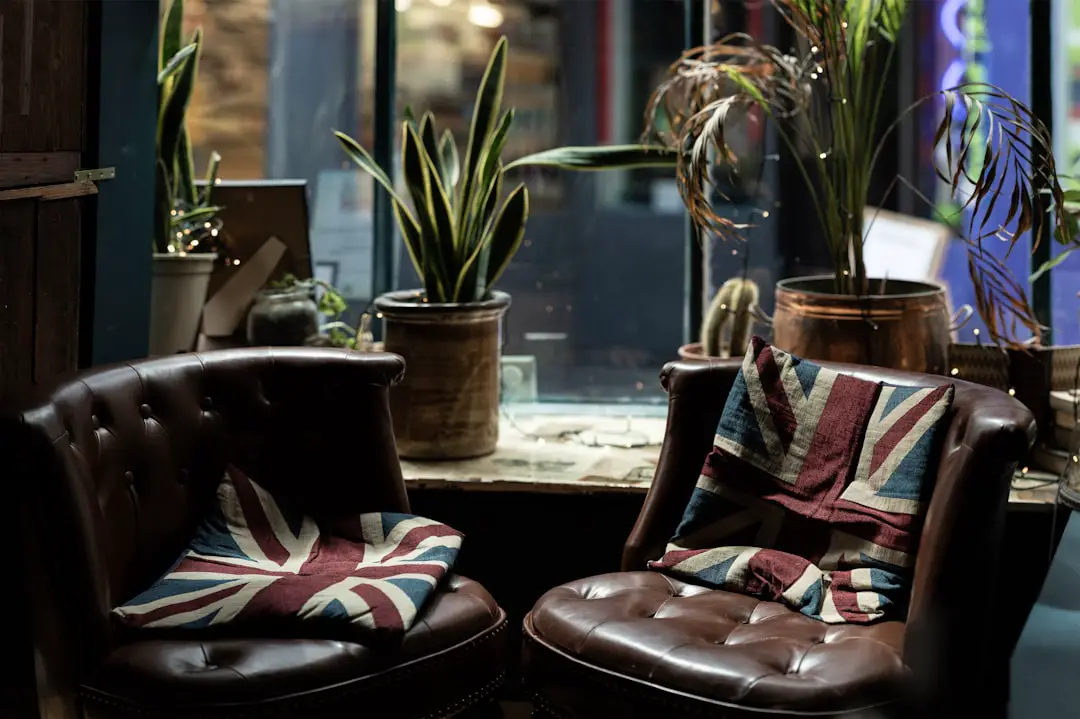
Growing tea plants in pots is a rewarding and fulfilling experience. Whether you have limited outdoor space or simply want to bring the beauty of tea plants indoors, potting tea plants allows you to cultivate your own tea right at home. By selecting the right tea plant variety, providing optimal sunlight and temperature, and ensuring proper watering and fertilizing, you’ll be well on your way to enjoying the fruits of your labor. So, why not embark on this tea-growing adventure and savor the satisfaction of brewing a cup of tea made from leaves you nurtured yourself? Cheers to your tea-growing journey! 🍵
Recommended Links
- Green Tea Cultivation
- Herbal Tea Planting
- Tea Plant Varieties
- Soil and Climate for Tea
- Tea Market Trends
- Grow Tea Tree Indoors: Cultivate Your Own Indoor Tea Garden 2024
Reference Links
- Tea Plant Care Guide – Tree2mydoor
- Wikipedia – Camellia sinensis
- Royal Horticultural Society – Growing Tea
- Gardening Know How – Growing Tea Plants
Remember, with a little patience and care, you can cultivate your own tea garden and enjoy the pleasure of sipping tea made from leaves you grew yourself. Happy tea growing! 🌱🍵
